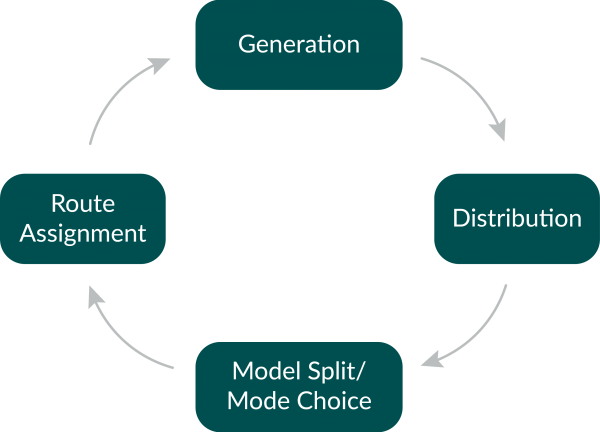Most cities and MPO’s in the State have a Travel Demand Model that is used to forecast future travel demand along a corridor or subarea. WSDOT also provides travel modeling services for State highway projects, in coordination with local and regional agencies.
The traditional travel demand modeling approach consists of four major steps: trip generation, trip distribution, mode choice and trip assignment. These four-step models answer several types of questions: How many people travel? What are the travel patterns for the study area? What travel modes are used? What trip paths will be followed through the transportation network?
The trip assignment process is generally done separately for driving and transit. The two networks are related to one another in that congested highway travel times should be used to estimate bus performance, assuming that buses are not provided with preferential treatment on the road network. Driving network assignment focuses on auto vehicle trips and can model trip-makers’ network paths using approaches such as all-or-nothing, incremental, capacity-restrained, user-equilibrium and system optimum assignment. Most WSDOT studies focus on the vehicle assignment process.
Note that most travel demand models do not forecast walking and bicycling demand accurately. A lack of adequate facilities for walking and bicycling can often mask latent demand, since most people will not walk or bike on facilities where they do not feel comfortable if they have other transportation options. The forthcoming Washington State Active Transportation Plan (2019) will provide additional information on assessing walking and bicycling demand.
4 Step Model for Traffic Assignment

